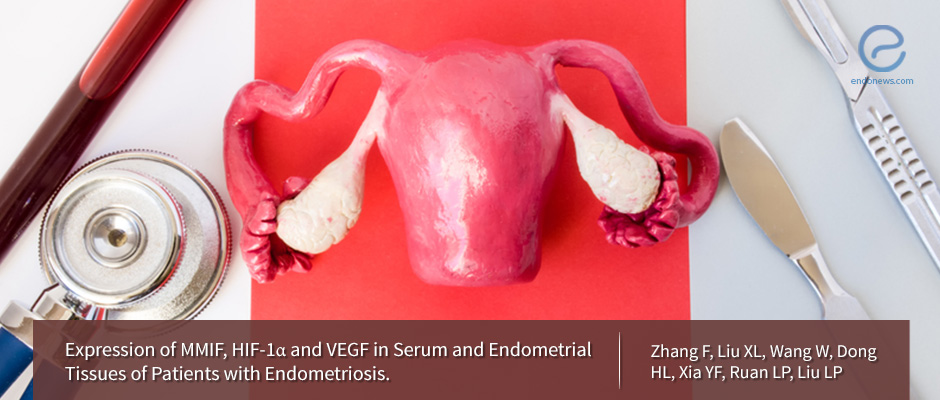A Better Way to Diagnose Endometriosis?
Sep 10, 2018
The concentration of three proteins in the blood could be indicative of the stage of endometriosis a woman has.
Key Points
Highlights:
- The concentration of three proteins in the blood and endometrium can help determine the stage of endometriosis and severity of period pain.
Importance:
- These proteins may be used as a biomarker for endometriosis and help both clinicians patients with endometriosis.
What's done here:
- Researchers analyzed the concentration of three proteins called macrophage migration inhibitory factor (MMIF), hypoxia-inducible factor-1 a (HIF-1α), and vascular endothelial growth factor (VEGF) in the blood of 80 women with endometriosis and 40 women without.
Key results:
- The concentration of MMIF, HIF-1α, and VEGF is significantly higher in the blood of women with endometriosis compared to women without the condition.
- The concentration of the above three proteins increases with disease severity and with the severity of period pain both in the blood and endometrium of women with endometriosis.
- The sensitivity and specificity of the combined detection of MMIF, HIF-1α, and VEGF levels in the blood are significantly higher than those of single index detection.
Limitations:
- The study included a relatively small number of women and the results should be confirmed in a larger group from several centers.
- The examined three-factor may not be specific to endometriosis and could be increased in other unknown conditions as well.
Lay Summary
Three proteins found in the blood and endometrial tissues could be used to determine the stage of endometriosis and the severity of painful periods according to a study published in the journal Current Medical Science.
Evaluating the levels of these three proteins spontaneously could improve the sensitivity and specificity of a diagnosis of endometriosis and could help clinicians decide on the therapeutic route to take.
For the study, researchers in China analyzed 80 women with endometriosis. Of these women 20 had stage 1, 22 had stage 2, 21 had stage 3, and 17 had stage 4 endometriosis, classified according to the American Reproductive Association classification.
When the women were divided into three groups according to the severity of their period pain using a point system from 1 to 30; 28 women had mild period pain (10-14 points), 27 had moderate period pain (16-24 points), and 25 women had severe period pain (26-30 points).
The study also included 40 healthy women of reproductive age as a control group.
The researchers analyzed the concentration of three proteins called macrophage migration inhibitory factor (MMIF), hypoxia-inducible factor-1 a (HIF-1α), and vascular endothelial growth factor (VEGF) in the blood and the lining of the uterus of all women.
They found that the concentration of all three proteins was higher in the blood of women with endometriosis compared to that of women without the condition. They also found that the concentration of all three proteins increased both in the blood and endometrial tissue with disease severity and severity of pain experience during periods.
The researchers concluded that the concentration of MMIF, HIF-1α, and VEGF in the blood and endometrial tissues may be used to assess the stage of endometriosis and the severity of period pain.
MMIF is a cell signaling molecule that influences the number and migration on immune cells to a site of inflammation, therefore increasing the local inflammatory response. HIF-1α is a protein that responds to low oxygen levels in tissues and is associated with cell division, differentiation, and programmed cell death. VEGF induces the proliferation of cells lining the interior surface of blood vessels and is involved in the vascularization of the uterus.
Research Source: https://www.ncbi.nlm.nih.gov/pubmed/30074218
macrophage migration inhibitory factor MMIF vascular endothelial growth factor VEGF diagnosis period pain endometriosis stage

